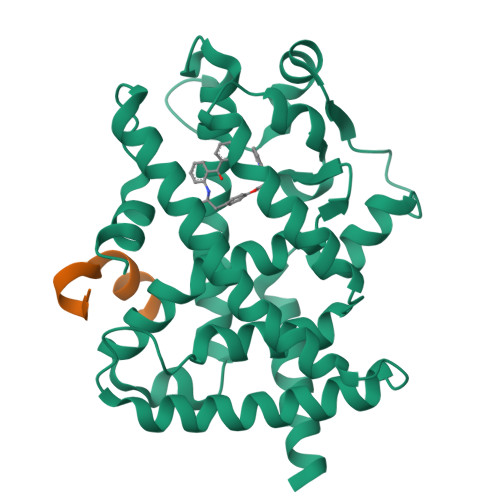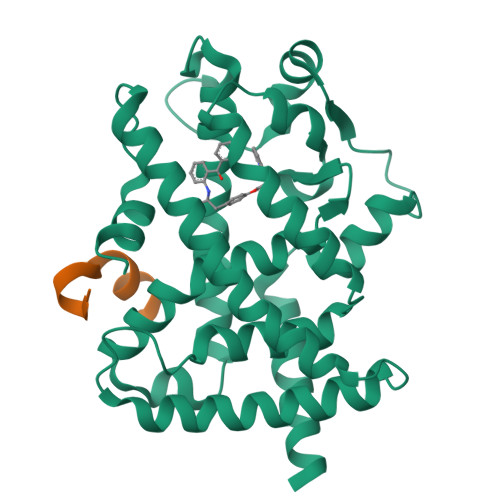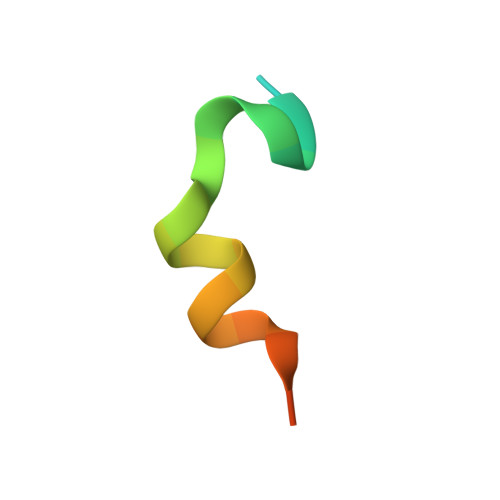A structural mechanism of nuclear receptor biased agonism.
Nemetchek, M.D., Chrisman, I.M., Rayl, M.L., Voss, A.H., Hughes, T.S.(2022) Proc Natl Acad Sci U S A 119: e2215333119-e2215333119
- PubMed: 36469765
- DOI: https://doi.org/10.1073/pnas.2215333119
- Primary Citation of Related Structures:
6D94, 7RLE - PubMed Abstract:
Efforts to decrease the adverse effects of nuclear receptor (NR) drugs have yielded experimental agonists that produce better outcomes in mice. Some of these agonists have been shown to cause different, not just less intense, on-target transcriptomic effects; however, a structural explanation for such agonist-specific effects remains unknown. Here, we show that partial agonists of the NR peroxisome proliferator-associated receptor γ (PPARγ), which induce better outcomes in mice compared to clinically utilized type II diabetes PPARγ-binding drugs thiazolidinediones (TZDs), also favor a different group of coactivator peptides than the TZDs. We find that PPARγ full agonists can also be biased relative to each other in terms of coactivator peptide binding. We find differences in coactivator-PPARγ bonding between the coactivator subgroups which allow agonists to favor one group of coactivator peptides over another, including differential bonding to a C-terminal residue of helix 4. Analysis of all available NR-coactivator structures indicates that such differential helix 4 bonding persists across other NR-coactivator complexes, providing a general structural mechanism of biased agonism for many NRs. Further work will be necessary to determine if such bias translates into altered coactivator occupancy and physiology in cells.
Organizational Affiliation:
Center for Biomolecular Structure and Dynamics, University of Montana, Missoula 59812.




















